
How to do successful Virtual Employee Onboarding during COVID-19

Ms. Pomerantz is the CEO of TPG HR Services USA and has over 35 years of Human Resources practices experience. She holds a Master’s in Human Resource Management (MHRM) and is a certified Senior Professional in Human Resources (SPHR) and SHRM Senior Certified Professional (SHRM-SCP). Mary also serves as CEO of Mary Pomerantz Advertising, one of the largest recruitment advertising agencies in the country. Earlier in her career, she was president of the 17th largest staffing firm in the country.
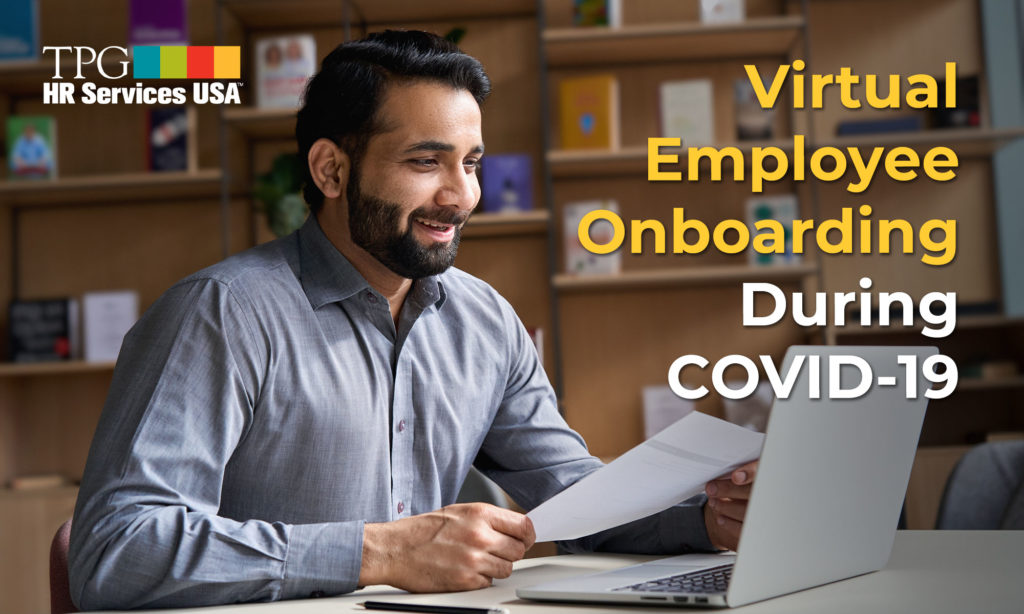
Successful virtual employee onboarding has become the most crucial part of the hiring process during the COVID-19 pandemic. Virtual employee onboarding has become a requirement for organizations that now rely on a partially or completely remote workforce. However, the challenges of the COVID-19 pandemic era have revealed that many companies are ill-prepared to conduct virtual employee onboarding in any but the most cursory way. This is often due to the legacy of processes such as an over-reliance on the paperwork that must be manually signed and verified, an over-reliance on in-person training techniques, and a lack of understanding of the importance of informal communication among staff members during the workday. To help your virtual employee onboarding to succeed, follow the steps outlined below.
Extra onboarding planning and effort is the first step for successful virtual employee onboarding
By putting some extra effort and planning into your virtual onboarding process you can dramatically improve the results and give new team members a real sense of belonging from day one, even if they can’t physically interact with their teammates due to remote working arrangements. There are a number of areas where this kind of extra attention to the various components of virtual onboarding can be important. For many companies, this starts with the raft of paperwork that often accompanies a new hire to the organization.

Moving from paper to digital
Although many organizations have resolved to “go paperless” over the years, the sad truth is that many of our companies faced the start of the COVID-19 pandemic with a reliance on paper forms, requiring in-person signing and verification, for many critical onboarding functions. According to Maria Clyde, SHRM-SCP, director of human resources for BHI, an insurance agency headquartered in Delaware, “Onboarding has been especially difficult for companies that are antiquated in their processes,” but there are a number of affordable and easy-to-use e-sign options. In an article on virtual onboarding on SHRM.org, she encourages employers to explore the features that may already be built into their payroll or benefits administration systems and just need to be activated on the company’s end. Even for filling out and verifying I-9 forms, electronic verification options exist that can be utilized by you or your designated HR provider, greatly speeding up the onboarding process and reducing the need for physical review and signing of paperwork. [1]
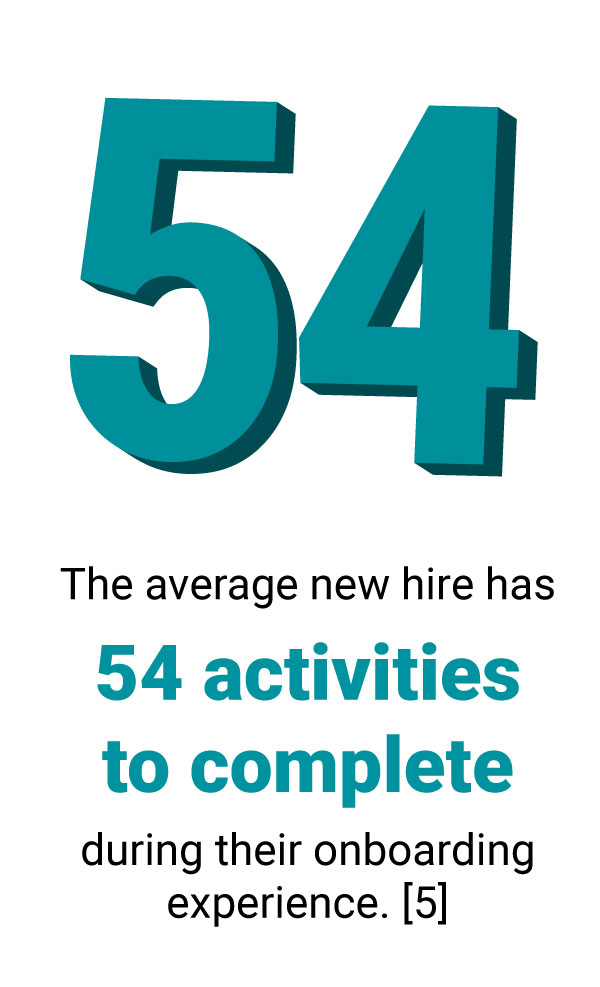
Putting out the welcome mat
With remote work putting a damper on some of the traditional new employee welcoming rituals at many businesses, companies have had to come up with new and innovative ways of making new employees feel that they are really part of a larger team. Some have turned to virtual lunches, delivered by DoorDash or Uber eats, and conducted over videoconferencing calls. Others have sent boxes of company-branded merchandise or snacks to employees at home to make their home office feel more connected to the company. For new employees who have yet to see the company’s physical office space, a virtual tour could be filmed if any members of the team still work in the physical office location (or have access to it). Seeing their name on an office door nameplate can help new hires feel that there is a physical place for them to wait once the COVID-19 pandemic wanes enough to make returning to in-person work possible. [1]
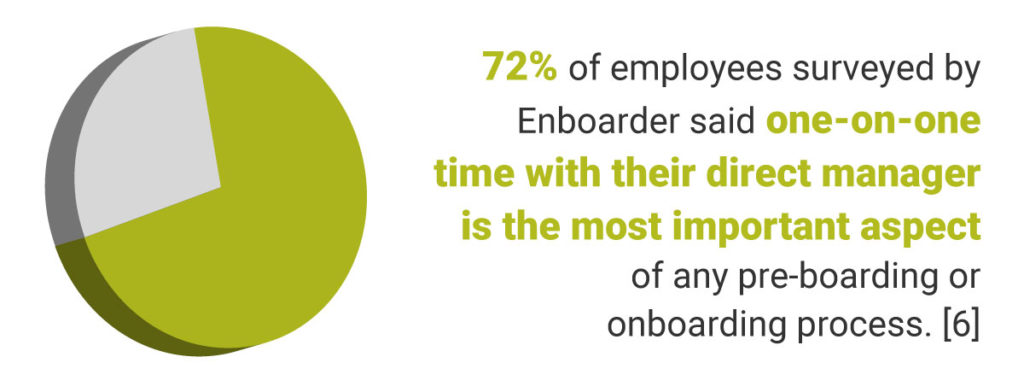
Reimagining mentoring and training opportunities
Particularly for entry-level new hires, remote working arrangements can lead to a dramatic reduction in the opportunity for informal and formal mentoring and training that in-person office work allows and fosters. Topics that could once be covered in quick impromptu meetings in the office now had to be scheduled via teleconferencing software. Sidney Vidaver, a compliance officer for a mining company, put it this way: “Until [the pandemic began], I didn’t realize all the impromptu meetings we had in the office. Now everything has to be deliberate because we’re not getting the chance to see someone.”
The changing interpersonal dynamics of a remote work setup also caused him to institute regular monthly two-hour webinars to introduce new employees to specific technical topics. He further added that “We’ve even opened them up to anyone in the company who wants to learn about the topic,” illustrating how adjustments to the onboarding process can even open up new mentoring and training opportunities to employees who have been with the company since before the pandemic, possibly tapping into existing skills and interests among staff members that management may have been unaware of previously.
[1]
Using video conferencing effectively
For many companies during the COVID-19 pandemic, using videoconferencing technology has become essential. Getting new employees “in the loop” as quickly and seamlessly as possible, may require some technical assistance. For some companies, this means shipping out laptops to new employees, preloaded with all of the critical software and documentation they will need from day one. Other companies have different approaches, but it is critical that you make sure new employees have all the tools and knowledge they’ll need to connect and interact with your team via videoconferencing. Some new employees may not have the same level of comfort and expertise with using videoconferencing tools from the start, making a flexible system of technical training (involving video tutorials or even one-on-one walkthroughs) very important from the moment they join your team. This will enable them to actively participate without feeling overwhelmed by technical “speed bumps” along the way.
[2]
6 Most Common Worries New Hires Have When Having To Do Virtual Employee Onboarding
Keeping New Employees Engaged Online
Let’s face it; video conferencing will never have the same level of employee engagement as in-person meetings, conducted face to face. However, there are certain guidelines to follow that can maximize your new employees’ level of engagement if you plan ahead. According to Sally Stetson, co-founder and principal at the Philadelphia executive search firm Salveson Stetson Group, virtual employee onboarding “needs to be conducted over multiple, interactive video sessions that provide an overview of the company and its products and services, and incorporates meetings with managers, team members and even business leaders like the CEO.” If your organization is new to remote onboarding (like many of us were before the COVID-19 pandemic, now is the time to create a series of short videos on specific critical topics. These videos can be sent to new hires for them to watch during the times they are not scheduled to have videoconferencing sessions with other team members and supervisors.
[2]
Incorporating break-out sessions and “get to know you” events
Particularly during a new employee’s first week, it can be very helpful to have a schedule of full days of online engagements to make the new hire feel they are fully part of their new team. When setting these sessions up it is important to make sure that participating staff members are punctual and prepared, so that new hires get a good first impression of your organization. However, you also don’t want to overburden new employees with an endless stream of highly technical or detailed content from day one. That’s why it is important to incorporate break-out sessions (including one-on-one sessions with hiring managers, supervisors, or “onboarding buddies”) into all video conferencing meetings.
This will give the new hire the chance to ask questions and feel less intimidated than they might during larger, more technical presentations. It is also important to incorporate informal events such as virtual “happy hours” to give new employees the chance to get to know their new team members on a more personal level. These types of events can put “a human face” on the individuals involved and forge personal connections across shared interests and hobbies, outside of the workplace.
[2]
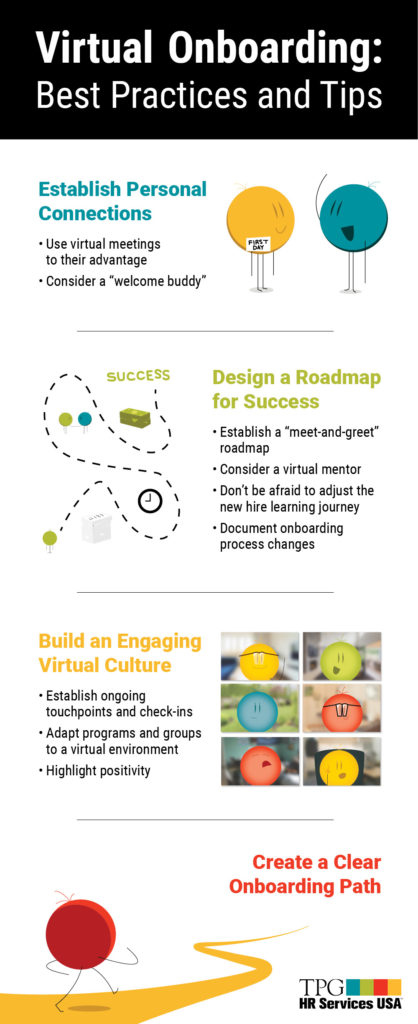
[4]
The Cost of Getting Virtual Employee Onboarding Wrong
According to HR industry studies, a great amount of staff turnover (as high as 20 percent) can happen within the first 45 days of employment. This level of early staff turnover falls squarely on the shoulders of failed onboarding efforts. With other studies estimating the cost to businesses of these early resignations ranging from $3,000 to $18,000 per failed hire, the purely economic impact of unsuccessful onboarding efforts is significant. However, there are also other hidden costs to be considered as well
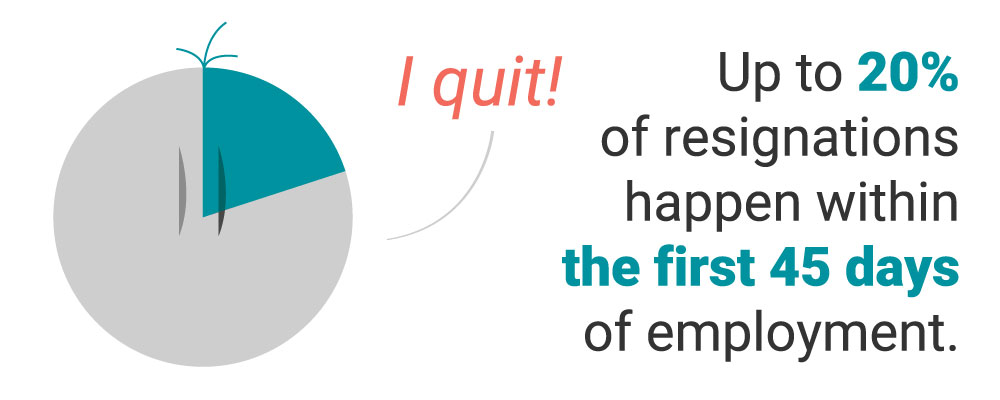
The disruption to team activities caused by new hires that fail to gel with their work groups can negatively impact productivity and even the morale of the remaining team members. In the extreme, this can even lead to the adoption of a “sinking ship” mentality by team members you repeatedly see new hires abandoning their group in the early days of their employment. For all these reasons, it is critical to get your onboarding processes correct – and these days that means getting virtual onboarding right.
[7]
Getting help with the virtual employee onboarding process
So, if virtual onboarding is so important to get right, what’s the best way of ensuring that you do so? For many companies, particularly in these days of strained resources and COVID-related challenges, partnering with a trusted HR services provider is the best possible answer. HR services experts like TPG HR Services can help ensure the virtual employee onboarding of your company’s new hires is successful. Our highly trained professionals have both the technical know-how and the Human Resources expertise to provide your new hires with the most comprehensive and supportive onboarding experience possible.
In these days of remote work arrangements and the business and social disruptions caused by the COVID-19 pandemic, effectively and efficiently onboarding new employees has never been more important. And, the dedicated onboarding experts at TPG HR Services can help you seamlessly transition your new recruits from candidates to trusted team members in a completely virtual setting if need be. We can also help you implement new technologies to assist you with not only onboarding-specific tasks but other aspects of your business as well, from ongoing training sessions to overall employee engagement and retention programs using a combination of appropriate technology and HR principles and best practices.
Partnering with TPG HR Services
If you need to upgrade your company’s virtual employee onboarding processes, TPG HR Services is here to help immediately. We can design and administer your employee onboarding process either completely or in part to ensure that your new hires can hit the ground running and integrate seamlessly with your existing team members. Give your new team members the best chance to succeed and fuel your company’s current and future growth by partnering with the virtual employee onboarding experts at TPG HR Services today!
Sources:
- https://www.shrm.org/resourcesandtools/hr-topics/talent-acquisition/pages/onboarding-new-employees-in-the-covid-19-era-takes-extra-planning-effort.aspx
- https://www.shrm.org/ResourcesAndTools/hr-topics/talent-acquisition/Pages/Virtual-Onboarding-Remote-Workers.aspx
- https://www.shrm.org/resourcesandtools/hr-topics/talent-acquisition/pages/6-things-about-virtual-onboarding-that-worry-new-hires.aspx
- https://enterprisersproject.com/article/2020/4/virtual-onboarding-best-practices
- https://www.saplinghr.com/10-employee-onboarding-statistics-you-must-know-in-2021
- https://www.fastcompany.com/90480127/how-to-onboard-new-employees-when-youre-all-working-from-home
- https://www.forbes.com/sites/85broads/2013/07/19/how-not-to-lose-your-new-employees-in-their-first-45-days/?sh=4b2a1a703be3
